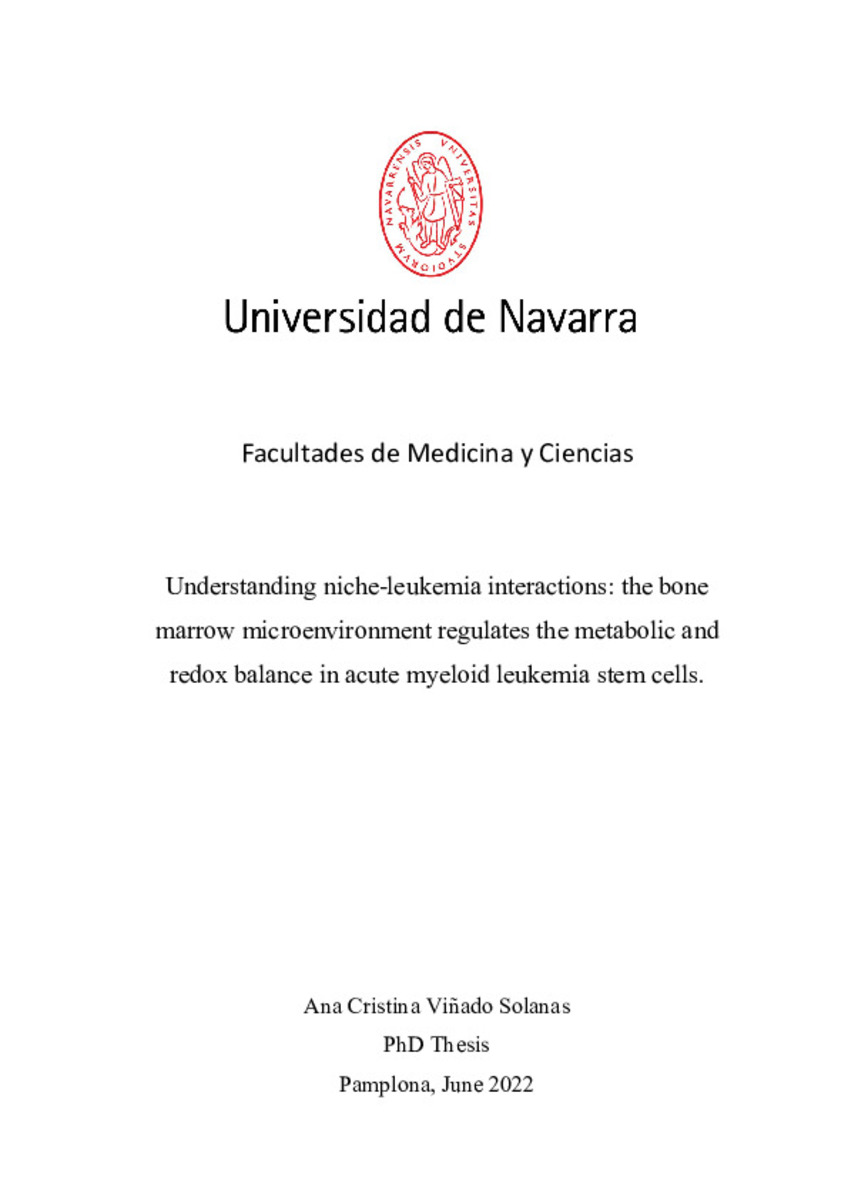Understanding niche-leukemia interactions: the bone marrow microenvironment regulates the metabolic and redox balance in acute myeloid leukemia stem cells
Keywords:
Materias Investigacion::Ciencias de la Salud::Oncología
Niche-leukemia interactions
Acute myeloid leukemia
Hematopoietic stem cells
HSC
Defense Date:
25-Oct-2022
Publisher:
Universidad de Navarra
Citation:
VIÑADO, Ana Cristina. "Understanding niche-leukemia interactions: the bone marrow microenvironment regulates the metabolic and redox balance in acute myeloid leukemia stem cells". Rifon, J. y Saez, B. (dirs.). Tesis doctoral. Universidad de Navarra, Pamplona, 2022.
Statistics and impact
0 citas en

0 citas en

Items in Dadun are protected by copyright, with all rights reserved, unless otherwise indicated.







